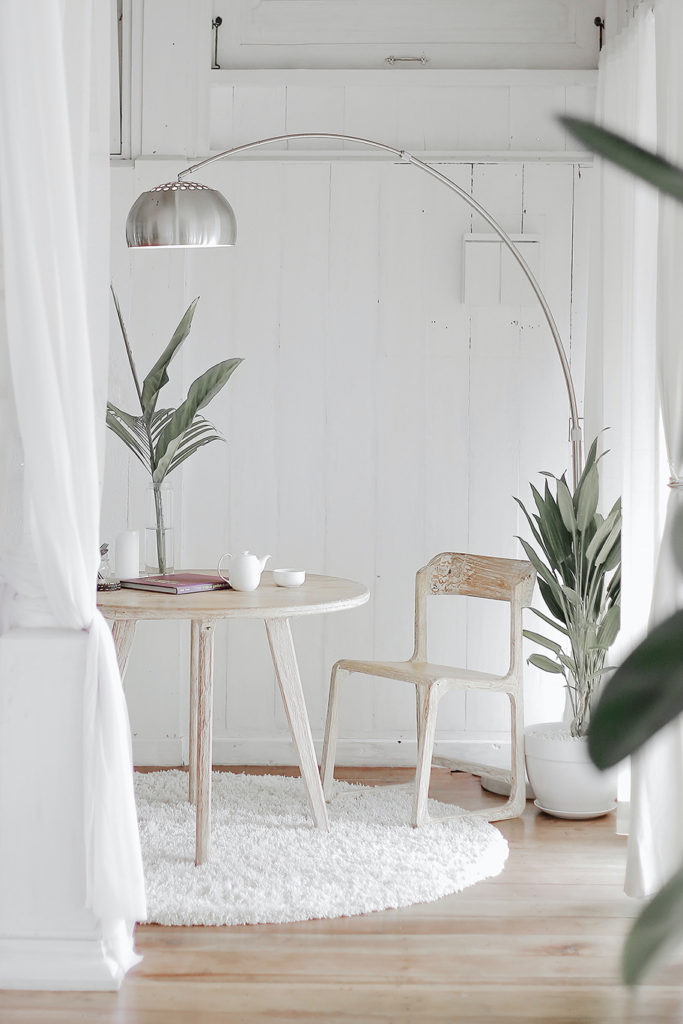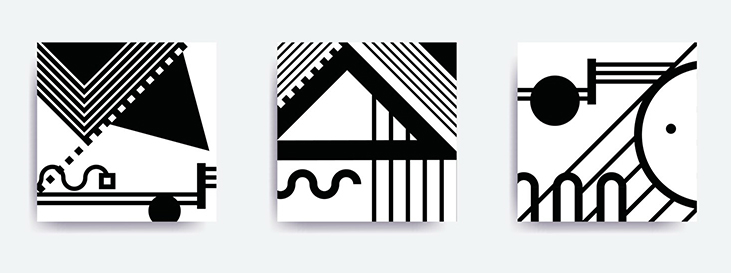Being Minimalist
Written by Erva Ozkan.
I have just finished painting the wall white. Luckily, I do not have any furniture that I can splatter the paint on. Since I have worked hard, I am hungry. As soon as I arrive in the kitchen, I will put the rice in my bowl, which is the only bowl I have. I have trained myself to live without needing anything. I do not like wasting. I do not even have a trashcan because I do not have trash. Welcome to my minimal life!
If I were you, I might, indeed, think this lifestyle is beyond belief. To be called a minimalist, you do not need to follow any obligatory rules or to be called a minimalist to have this simple lifestyle. In essence, you can create a life based on the famed motto “Less is more.” Yet, you are the person who is going to decide the degree of “less!”
Despite the emergence of minimalism as an art movement, it has become a philosophy of life nowadays. People are choosing to be minimalist in their own way with some basic minimalistic beliefs such as live with less, less is more, and owning fewer possessions. Today, I am here to share the minimalistic perspective I have acquired by living, experiencing, and reading.
My story of becoming a minimalist started with trying to respect myself and nature. For centuries, along with all religious beliefs, many philosophies of life have spoken about the positive benefits of simply living. But we live in a world that continues to evolve in a materialist order, and in this materialistic world, we may feel like we need more ownership to feel valued and special. I can sincerely say that we are right to feel this way. But do you think that the things you own determine your self-worth?
Minimalism, which is literally simplified living, is more than reducing the clothes in our closets or setting up a living room with fewer items. There are many areas where minimalism can take place in our lives. Minimal clothing, minimal budgets, minimal diets, minimal digitalism, minimalist bookshelf, and even minimalist psychology, to name a few.
Every day, when we open our closets in the morning, the clothes we never wear wink at us. Meanwhile, the books we buy every time we go to the bookstore are waiting to be read. Or maybe it is all those promotional emails that are waiting in our mailboxes, or the unused user guides that are waiting in unopened drawers. The provisions we bought but kept in the fridge for such a long time are yet another example, not to mention the thousands of thoughts in our minds that do not even belong there any longer. The list goes on. Do you not think it is tiring? Fortunately, this simple lifestyle alternative somehow brings a mindful approach to your life. You will have more time to be happy rather than stressed, and more time to develop better relationships and working environments.

I can hear you asking, “Where should I start then?” I basically included two steps in my life: evaluation and action. Before evaluating any stuff we own, we should turn the mirror to ourselves to see who we are and what we really need. That is such a key step to living life to the fullest and as freely as possible, not just for minimalism. If we determine our needs, we can feel fulfilled. Once you desire to own something, you should ask yourself about whether or not it is your need or wish that is driving you. Short-term wishes can lead to a burden on your shoulders. But owning intentionally brings you joy for the long-term.
Most of our behaviors are signs of our real selves, so I recommend trying to figure out what you are missing inside. Do not be afraid to ask questions about yourself. What part of you are you trying to fill with these goods? Maybe you need to feel valuable, to be loved, or to be respected. Discovering what you lack means you did a great job and reached a new level of awareness of yourself. For doing so, I say you should compliment yourself! Also, it will be useful to remind yourself that the things you are looking for externally are already in you. These findings will help you realize that you do not need to fill any gap with material goods. You should know that your value cannot be measured in those things.
The second step is what I call “action.” In this case, I make an effort to take action. You can use the action part to include things in your life or to evaluate what is already in your life. Although the shopping world is tricky indeed, you have the power to stop time at the moment you are about to take the bait. Instead of quickly purchasing something, try to sleep on it and decide the next day whether or not you really need it or if you actually feel glad that you did not buy it. Next, I like to think “one comes, one goes.” Remember this rule. If you have purchased something new, try to reduce something you already have. But if we are going to talk about what you already have, why not start from home? You probably own a bunch of things that you have not even used in the past year. You can proceed by categories rather than thinking about the whole home. For example, you can start with your socks in the drawer. Actually, the meaning we place on them does not really represent the purpose of the items we have. Try to remember the reason why you bought each item.
In the end, you will have less stress and a happier life with minimalism. You will be saving more energy and money; that way you can find yourself spending more time on experiences rather than on stuff. Is it not great? Most importantly, at least for me, you will be reducing your carbon footprint. All the processes we are going through on this path are not only about ourselves. Remember where you are living. Remember the stuff you use and where it came from. I believe that having this beneficial, minimalist lifestyle will help you show compassion to yourself and to nature. Just a small reminder, we all are connected!
THE AUTHOR
Erva Ozkan is a simple human living on Planet Earth since 1993, besides her other earthly qualifications. She loves nature and being on her way in life. Instagram: @biyolokumunuz







